Siding Estimate A Comprehensive Guide
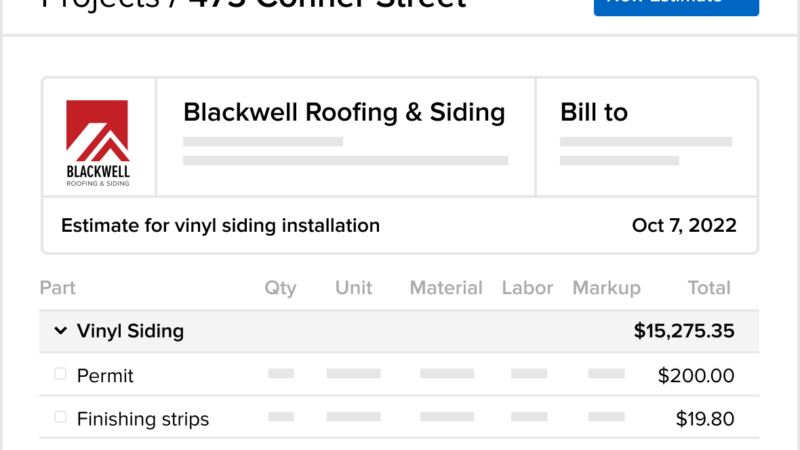
Siding Estimate: Getting accurate siding estimates is crucial for successful home renovations. This guide walks you through every step, from understanding the cost components to presenting a professional estimate to your client. We’ll cover different siding materials, labor costs, and methods for creating both rough and detailed estimates, ensuring you’re fully prepared for any siding project.
We’ll explore factors influencing cost accuracy, including regional price variations and potential hidden costs. Learn how to account for unexpected issues and create visually appealing estimates that communicate your pricing and project scope to potential clients. We’ll even delve into visual aids to help you effectively showcase your expertise and secure those projects!
Understanding Siding Estimate Components
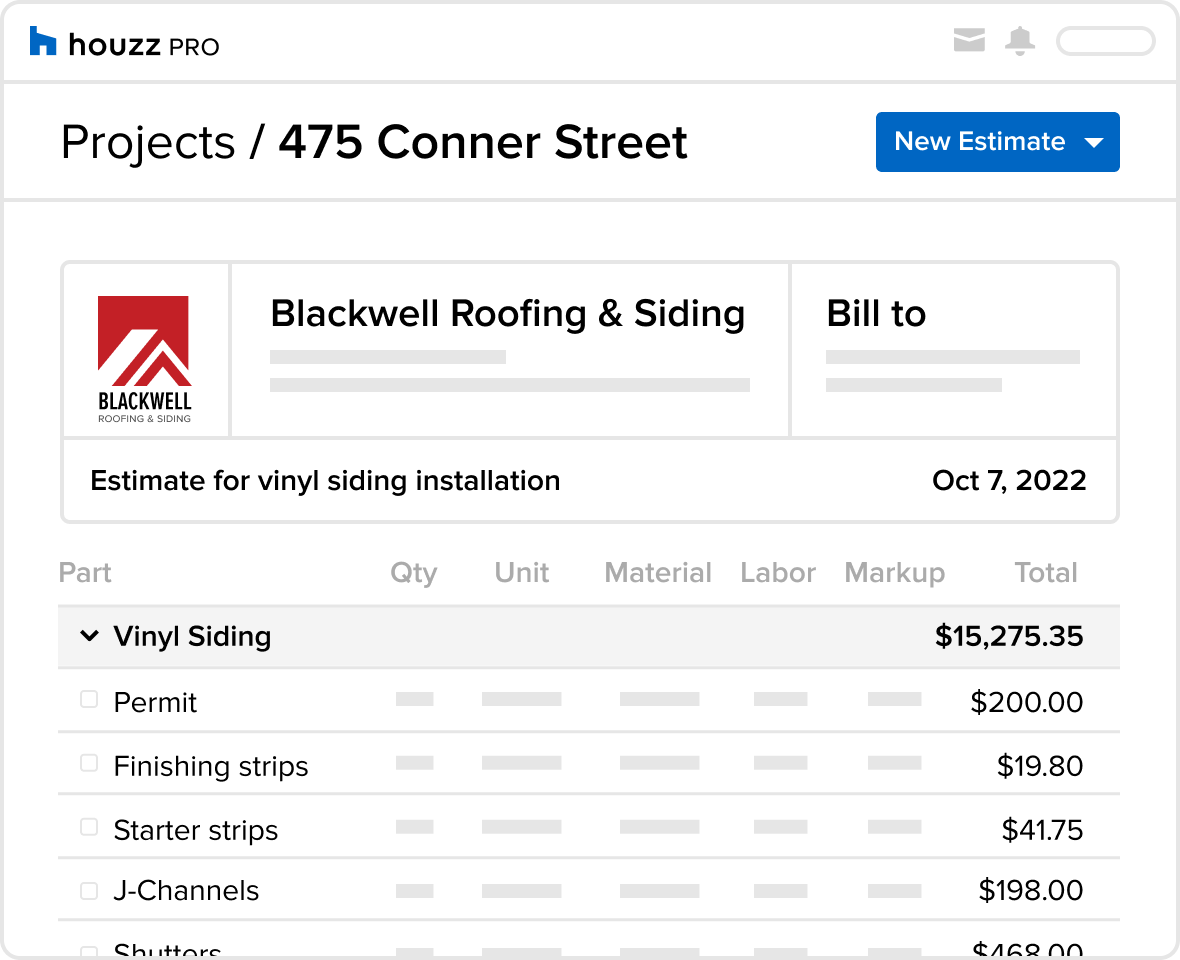
Source: prismic.io
Getting a clear understanding of your siding estimate is crucial for a successful home improvement project. This involves more than just a final price; it requires understanding the individual components that contribute to the overall cost. Let’s break down the key factors influencing your siding estimate.
Factors Influencing Siding Installation Costs
Several factors significantly impact the total cost of your siding installation. These include the size of your house (larger houses require more materials and labor), the complexity of the project (unusual architectural features or extensive repairs increase costs), the type of siding chosen (materials vary widely in price), the existing condition of your home (requiring more prep work adds expense), and the labor rates in your region (rates fluctuate based on location and contractor demand). For example, a two-story house with intricate trim details will naturally be more expensive to side than a single-story ranch with a simple design. Similarly, a project requiring extensive removal of damaged siding will add to the overall cost compared to a straightforward installation.
Siding Material Types and Price Ranges
Different siding materials offer diverse aesthetics and price points. Vinyl siding is generally the most budget-friendly option, typically ranging from $2 to $8 per square foot for materials. Fiber cement siding provides excellent durability and longevity but comes at a higher cost, ranging from $8 to $20 per square foot. Wood siding, known for its natural beauty, can range from $10 to $30+ per square foot, depending on the type of wood and its quality. Metal siding, while durable and low-maintenance, usually falls within a price range similar to fiber cement. These price ranges are estimates and can vary based on factors such as quality, brand, and regional availability. For instance, premium cedar wood siding will be significantly more expensive than standard pine.
Labor Costs in Siding Projects
Labor costs constitute a substantial portion of your overall siding estimate. The hourly rate for skilled siding installers varies by location and contractor experience. Expect to pay anywhere from $40 to $80 or more per hour for experienced professionals. The total labor cost depends on the project’s complexity, the size of the house, and the time required for preparation, installation, and cleanup. A larger, more complex project naturally necessitates more labor hours, driving up the overall cost. A straightforward project on a smaller house might take fewer hours, reducing the labor cost component.
Cost-Effectiveness of Various Siding Options
The following table compares the estimated cost-effectiveness of various siding options, assuming a medium-sized house (approximately 1500 square feet) and average labor rates. Remember, these are estimates, and actual costs can vary.
| Siding Type | Material Cost | Labor Cost | Total Estimated Cost |
|---|---|---|---|
| Vinyl | $1500 – $6000 | $4000 – $8000 | $5500 – $14000 |
| Fiber Cement | $6000 – $15000 | $4000 – $8000 | $10000 – $23000 |
| Wood | $7500 – $22500+ | $4000 – $8000 | $11500 – $30500+ |
| Metal | $6000 – $15000 | $4000 – $8000 | $10000 – $23000 |
Gathering Information for Accurate Estimates
Getting an accurate siding estimate requires meticulous information gathering. This ensures you’re not only getting the right amount of materials but also accounting for potential complications that could inflate the final cost. A thorough process minimizes surprises and ensures a smooth project.
Measuring the Area Requiring Siding
Accurate measurements are the foundation of any successful siding project. Start by creating a detailed sketch of your home’s exterior, noting all sides and features like windows, doors, and vents. Use a measuring tape to record the height and width of each section requiring siding. Remember to measure in feet and inches for precision. For complex shapes, break them down into smaller, easily measurable sections. For example, a gable roof might be divided into triangles and rectangles for easier calculation. Always double-check your measurements to avoid errors. Consider using a laser measure for increased accuracy, especially for hard-to-reach areas. Finally, calculate the total square footage needed by multiplying the height and width of each section and summing the results. This total will form the basis for your material calculations.
Identifying Existing Siding Conditions and Potential Issues
A thorough inspection of your existing siding is crucial. Look for signs of damage, such as rot, cracks, insect infestation, or loose boards. Note the type of siding currently installed (e.g., vinyl, wood, fiber cement) as this impacts material compatibility and installation methods. Inspect for any underlying issues like water damage or improper flashing around windows and doors, which could affect the new siding’s longevity. Pay close attention to areas prone to moisture damage, such as corners, joints, and around foundation elements. Document any findings with photos or detailed notes. For instance, a photograph of a rotted section of wood siding would help justify replacement costs. Consider taking notes about the overall condition; for example, noting that “80% of the existing vinyl siding is in good condition, with minor damage to 20% concentrated around the south-facing wall” helps illustrate the scope of the work.
Creating a Detailed Materials List
Once measurements are complete and the condition of the existing siding assessed, you can create a precise materials list. This should include the type and quantity of siding needed, along with all necessary accessories like flashing, nails, caulking, and trim. For example, if you are using vinyl siding, specify the color, style, and number of panels needed based on your square footage calculations. Factor in extra material for cuts, waste, and potential mistakes. A 10-15% overage is usually recommended. Include all necessary underlayment or moisture barriers. Detailing the specific brand and model number of materials helps ensure consistency and facilitates ordering. A well-organized list prevents delays and ensures all necessary components are available during installation.
Checklist of Necessary Information for a Precise Estimate
Before providing a final estimate, gather the following information:
- Total square footage of siding needed
- Type of siding (e.g., vinyl, wood, fiber cement)
- Siding color and style
- A detailed description of the existing siding condition and any issues
- List of all necessary materials and accessories, including quantities
- Labor costs (per hour or per square foot)
- Permits and inspection costs (if applicable)
- Waste removal costs
- Client’s preferred installation timeline
- Payment terms
This comprehensive checklist helps ensure that no crucial element is overlooked, leading to a fair and accurate estimate. Remember that unforeseen complications can arise, so building i contingency for unexpected issues is always wise.
Different Types of Siding Estimates
Getting an accurate siding estimate is crucial for budgeting and planning your project. Different types of estimates offer varying levels of detail and accuracy, each with its pros and cons. Choosing the right type depends on your needs and the complexity of the job.
Different types of siding estimates provide different levels of detail and accuracy, influencing the overall project planning and budgeting. Understanding these differences is key to making informed decisions.
Rough Estimates
Rough estimates provide a quick, ballpark figure for the total cost of the siding project. They’re based on limited information, often just the square footage of the house and a general idea of the materials to be used. These estimates are usually free and are useful for initial budgeting and determining project feasibility. However, they lack precision and should not be relied upon for final decision-making. They are best suited for early-stage planning when a general idea of cost is needed before committing to a more detailed assessment.
Detailed Estimates
Detailed estimates, on the other hand, provide a much more comprehensive breakdown of the project costs. They include a detailed list of materials, labor costs, permits, and other potential expenses. These estimates require a thorough on-site assessment and a detailed understanding of the project scope. While more time-consuming and potentially more expensive to obtain, they provide a much more accurate reflection of the final cost. This allows for better budgeting and reduces the risk of unexpected costs during the project. A detailed estimate might include specific pricing for each type of siding, trim, flashing, and labor hours needed for different aspects of the project. For example, it might detail the cost of removing old siding, installing new sheathing, and painting or staining the new siding separately.
Unit Price Estimates
Unit price estimates break down the cost of the project into individual units of work or materials. For instance, the cost per square foot of siding installation, the cost per linear foot of trim, and the cost per hour of labor might be itemized. This allows for better transparency and easier comparison between different contractors. This method offers a clear picture of individual cost components, making it easier to identify areas where savings might be possible. For example, if one contractor charges significantly more per square foot of siding installation, you can compare it to other estimates to determine if that’s justified.
Flowchart Illustrating Estimate Development
The following illustrates the process for developing each estimate type. Note that while the flowchart simplifies the process, the actual steps may vary slightly depending on the contractor and the specifics of the project.
[Diagrammatic representation of a flowchart. The flowchart would visually represent three distinct paths, one for each estimate type (Rough, Detailed, Unit Price). Each path would begin with “Initial Client Contact” and branch out.
Rough Estimate Path: Initial Client Contact -> Basic Measurements (Square Footage) -> Material Cost Estimation (General) -> Labor Cost Estimation (General) -> Rough Estimate Provided.
Detailed Estimate Path: Initial Client Contact -> Detailed On-Site Assessment -> Material List & Pricing -> Detailed Labor Breakdown -> Permit Costs -> Contingency Budget -> Detailed Estimate Provided.
Unit Price Estimate Path: Initial Client Contact -> Detailed On-Site Assessment -> Unit Pricing for Materials (per sq ft, etc.) -> Unit Pricing for Labor (per hour, etc.) -> Detailed Breakdown of Units Required -> Unit Price Estimate Provided.
All paths would eventually lead to a final “Estimate Provided” box. The key difference would be the level of detail and information gathered along each path.]
Factors Affecting Siding Estimate Accuracy
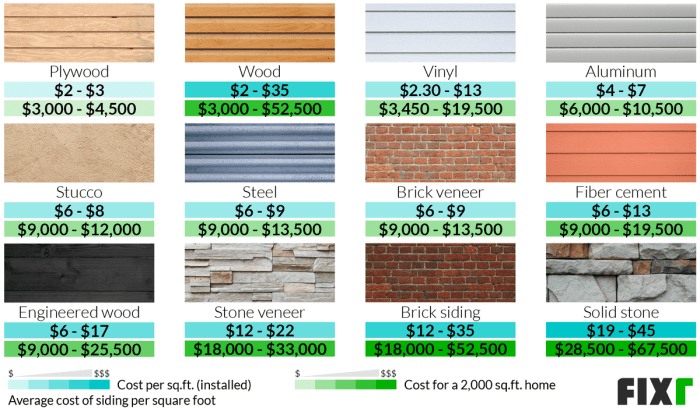
Source: fixr.com
Getting a precise siding estimate isn’t always straightforward. Several factors can influence the accuracy, leading to potential discrepancies between the initial estimate and the final cost. Understanding these factors helps homeowners prepare for potential adjustments and ensures a smoother renovation process.
Regional Variations in Material and Labor Costs
Material costs for siding, like vinyl, wood, or fiber cement, fluctuate significantly based on geographic location. Transportation costs, local taxes, and regional demand all play a role. For example, cedar siding might be considerably cheaper in regions with abundant cedar forests compared to areas where it needs to be shipped long distances. Similarly, labor costs vary widely. Areas with a high cost of living or a shortage of skilled labor will naturally command higher hourly rates for installers. A detailed estimate should break down material and labor costs separately, specifying the source and unit price for materials to highlight regional price differences.
Project Complexity’s Influence on Estimate Accuracy
Simple siding projects, such as replacing siding on a single-story house with a straightforward design, are easier to estimate accurately than complex projects. Complex projects might involve intricate architectural details, multiple siding materials, extensive repairs to the underlying sheathing, or difficult-to-access areas. The more variables involved, the greater the chance of unforeseen challenges that could impact the final cost. For instance, a house with numerous dormers, bay windows, or complex trim work will require more time and labor, increasing the overall estimate. Accurate estimates for complex projects require a thorough site survey and a detailed breakdown of individual tasks.
Potential Hidden Costs and Accounting for Them
Hidden costs are a frequent source of estimate inaccuracies. These might include: unexpected damage discovered during demolition (like rotted wood requiring extensive repairs), necessary permits and inspections, disposal fees for old siding, and unforeseen material needs due to inaccurate initial measurements. A reputable contractor should include a contingency buffer in the estimate to account for potential hidden costs. This buffer, often expressed as a percentage of the total estimate, allows for flexibility in addressing unforeseen issues without significant cost overruns. For example, a 10% contingency on a $10,000 estimate would allocate $1,000 for unforeseen expenses.
Factoring in Unexpected Issues or Changes During the Project, the Siding estimate
Even with thorough planning, unexpected issues can arise during a siding project. Weather delays, material shortages, or the discovery of underlying structural problems can disrupt the timeline and increase costs. To mitigate this, the contract should Establish a process for handling change orders. Change orders are formal documents that detail any alterations to the original scope of work, including the associated costs and timeline adjustments. For example, if rotted wood is discovered to require more extensive repairs than initially anticipated, a change order should be issued to document the additional work and associated cost increase. Open communication between the homeowner and contractor is crucial to managing unexpected issues effectively and maintaining estimate accuracy as much as possible.
Presenting the Siding Estimate
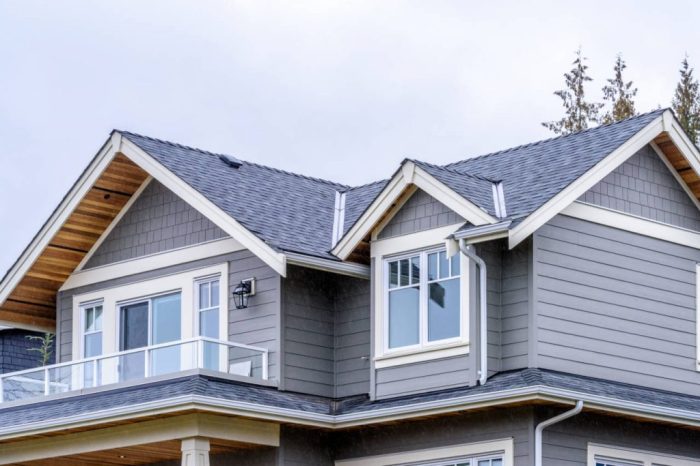
Source: inchcalculator.com
Presenting your siding estimate professionally is crucial for securing the job. A well-structured and easy-to-understand estimate builds trust and demonstrates your professionalism. This section will guide you through creating and presenting a compelling estimate to your clients.
Estimate Template Design
A clean, organized estimate is key. Using a table format helps present information. Here’s an example using an HTML table:
| Item | Description | Quantity | Cost |
|---|---|---|---|
| Labor | Installation of vinyl siding | 100 hours | $5000 |
| Materials | Vinyl siding (color: gray) | 200 sq ft | $2000 |
| Materials | Underlayment | 200 sq ft | $500 |
| Materials | Fasteners and trim | As needed | $300 |
| Waste Removal | Disposal of old siding and debris | 1 load | $200 |
| Total | $8000 |
This responsive table adapts to different screen sizes, ensuring readability on various devices. Remember to use consistent formatting and clear headings.
Clear and Concise Communication in the Estimate
Clarity is paramount. Avoid jargon and technical terms your client may not understand. Use plain language and explain any complex aspects of the project in simple terms. For example, instead of saying “application of polymeric sealant,” say “weatherproofing the seams.” A concise estimate is easier to review and understand, increasing the likelihood of approval.
Key Elements of a Comprehensive Estimate
A comprehensive siding estimate should include:
- Company Information: Your business name, address, phone number, and email address.
- Client Information: The client’s name and address.
- Project Description: A clear and concise description of the siding project, including the type of siding, square footage, and any additional work.
- Detailed Itemization: A breakdown of all costs, including labor, materials, permits, and waste removal.
- Payment Terms: Clearly state your payment terms, including deposit requirements and payment schedule.
- Warranty Information: Specify the warranty offered on materials and labor.
- Timeline: Provide a realistic timeframe for project completion.
- Total Cost: Display the total cost of the project.
- Acceptance Clause: Include a section for the client to sign and date, acknowledging their acceptance of the estimate.
Presenting the Estimate to a Client
Present the estimate in person or via email, whichever the client prefers. If presenting in person, bring multiple copies and be prepared to answer any questions. If emailing, ensure the estimate is in a clear, easy-to-read format (like a PDF). Walk through the estimate line by line, highlighting key aspects and addressing any concerns the client may have. For example, if a client questions the cost of materials, you can show them the supplier’s pricing or explain any cost increases due to specific material choices. Always maintain a professional and courteous demeanor throughout the process. Remember, this is a sales opportunity, so build rapport and answer all questions thoroughly and honestly.
Visual Aids for Siding Estimates
Visual aids are crucial for effectively communicating the details of a siding estimate to a client. They help bridge the gap between technical specifications and the homeowner’s understanding of the project, leading to clearer expectations and a smoother process. Well-chosen visuals can significantly improve client comprehension and acceptance of the estimate.
Different Siding Installation Methods
This illustration depicts three common siding installation methods: lap siding, horizontal shiplap, and vertical board and batten. The lap siding illustration shows overlapping horizontal planks, highlighting the need for proper flashing and overlapping to prevent water penetration. Tools depicted include a measuring tape, level, nail gun, and caulk gun. The steps shown include measuring and cutting the siding, applying flashing, nailing the siding into place, and caulking seams. The shiplap illustration emphasizes the tight, overlapping joints characteristic of this style, with similar tools and steps. The board and batten show vertical planks with narrower battens covering the seams, again showing the use of a level, measuring tape, nail gun, and caulk gun. Each method’s illustration includes a cross-section view showcasing the underlying sheathing and proper installation techniques for weather protection. The materials shown include different types of wood or vinyl siding, depending on the method, along with nails, caulk, and flashing.
Impact of Siding Choices on Home Aesthetics
This visual representation compares three different siding choices: vinyl clapboard, fiber cement shingle, and cedar shake. Each house is depicted in a similar architectural style, allowing for a direct comparison of the aesthetic impact. The vinyl clapboard house is shown in a classic white, highlighting its clean, simple lines. The fiber cement shingle house showcases a more textured, sophisticated look in a muted grey. The cedar shake house demonstrates a rustic, natural appeal with a warm brown tone. The illustration also highlights the textural differences – the smooth surface of the vinyl, the slightly rough texture of the fiber cement, and the natural, varied texture of the cedar shake. Color schemes are carefully chosen to demonstrate how siding color can affect the overall feel of a home – from modern and minimalist to rustic and traditional.
Before-and-After Siding Projects
The first before-and-after image shows a home with severely weathered and damaged wood siding. The siding is cracked, peeling, and showing signs of significant water damage. The after image showcases the same home with newly installed vinyl siding in a light beige color. The transformation highlights the improved curb appeal, improved weather protection, and overall enhanced appearance. The problem was significant water damage and aesthetic decay. The solution was the complete replacement of the old siding with a low-maintenance, durable vinyl alternative. The second before-and-after shows a house with outdated, dark-colored aluminum siding. The after image shows the same house with new, light-colored, fiber cement siding. The color change brightens the home’s exterior and the new siding provides a more upscale appearance. The problem was an outdated and visually unappealing exterior. The solution was to replace the aluminum siding with a modern, durable, and aesthetically pleasing fiber cement option.
Closing Summary: Siding Estimate
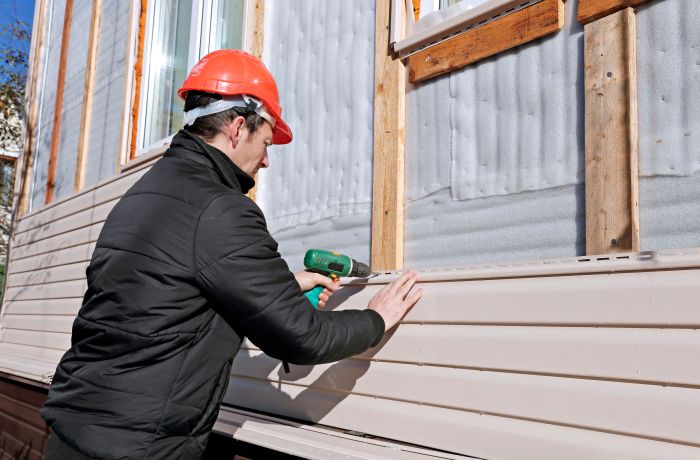
Source: fowlerexteriors.com
Mastering the art of siding estimation is key to a smooth and profitable siding business. By understanding the factors that affect cost, developing clear and comprehensive estimates, and using visual aids to enhance your communication, you can confidently tackle any siding project. Remember to always account for potential hidden costs and communicate all aspects of the project to your clients. With the knowledge gained here, you’re ready to provide accurate and compelling siding estimates that win you more jobs!
Top FAQs
What’s the average cost of siding installation per square foot?
The cost varies widely depending on materials, labor, and location. Expect a range from $3 to $20+ per square foot.
How long does a typical siding project take?
Project timelines depend on the size and complexity but expect anywhere from a few days to several weeks.
Do I need permits for siding installation?
Permits are often required; check with your local building department.
What if I find unexpected problems during installation?
Always include a contingency in your estimate to cover unforeseen issues. Communicate any changes and their costs with the client.
Can I get financing for siding installation?
Many home improvement companies offer financing options; check with your contractor.
Comments are closed.